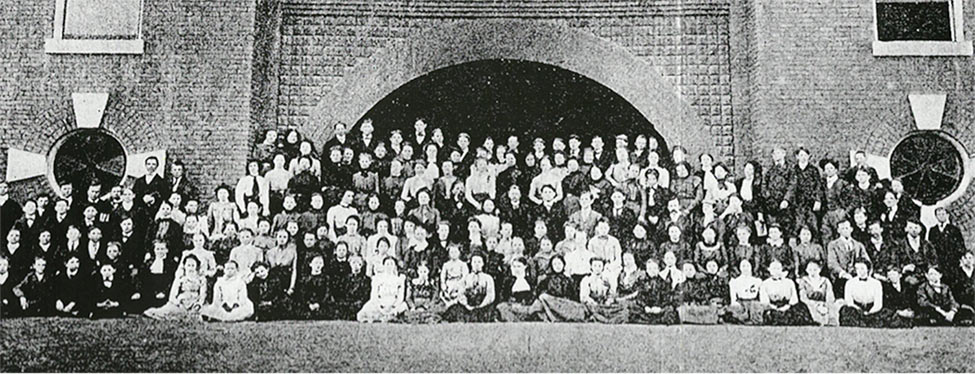Department History
Florida State / About Us / Department History / The Early Years (1820-1900)
The Early Years (1820-1900)
The territory that is now Florida became a United States possession in the year 1821, only thirteen years after John Dalton described his Atomic Theory of Matter as “the new system of chemical philosophy.”
In 1851, the Florida Legislature decreed that seminaries of higher education would be created east and west of the Suwannee River. Tallahassee offered ten acres of land and $2000 per year for the privilege of being the western site. This offer was accepted: The West Florida Seminary (WFS) had found a home. To allow female students similar academic opportunities as the males, the local academy for girls soon began sharing space with WFS.
WFS became coeducational in 1882, although non-curricular facilities for males and females remained separate. This arrangement lowered costs, but many patrons strongly objected to it. Education was coming of age, however, and the Seminary would soon serve as the foundation for the State’s first institution of higher learning. In an initiative lead by Reverend John Kost,—a College of Medicine and Surgery began its first term in 1883—it shared WFS facilities and allowed students to take chemistry courses.
Rather than turn the West Florida Seminary into a literary school, one of the five proposed divisions of the new university, President Edgar recommended that it become a four-year liberal arts college. Technical, normal and military training were being furnished at other institutions and he felt there would be unnecessary duplication if his institution also offered these programs. Approval was granted. The West Florida Seminary, forerunner to Florida State University, became the first liberal arts-based school in the State University System of Florida.
During the next two decades, WFS hired faculty specialists and expanded and remodeled its facilities. Chemistry was studied “with a view to giving the student a clear conception of chemical action and a knowledge of the laws which govern chemical combination.” Equipment was fair, but the laboratories and library needed constant expansion to keep up with the growth of new knowledge.
The Seminary’s first science curriculum leading to the Bachelor of Science degree was offered in 1898. The program included four semesters of chemistry, six of biology, two of physics and one each of geology and astronomy. Advanced courses in chemistry, physiology and electricity were available as electives. Available chemistry courses of the time included inorganic, organic, analytical, advanced inorganic, medical and pharmaceutical chemistry. WFS also offered three teaching laboratories whose labs were fitted with drawers, hoods, gas, water, tables, shelves, chemicals and equipment and was proclaimed the best-equipped laboratory of the institution.

West Florida Seminary Student Body, c. 1900
